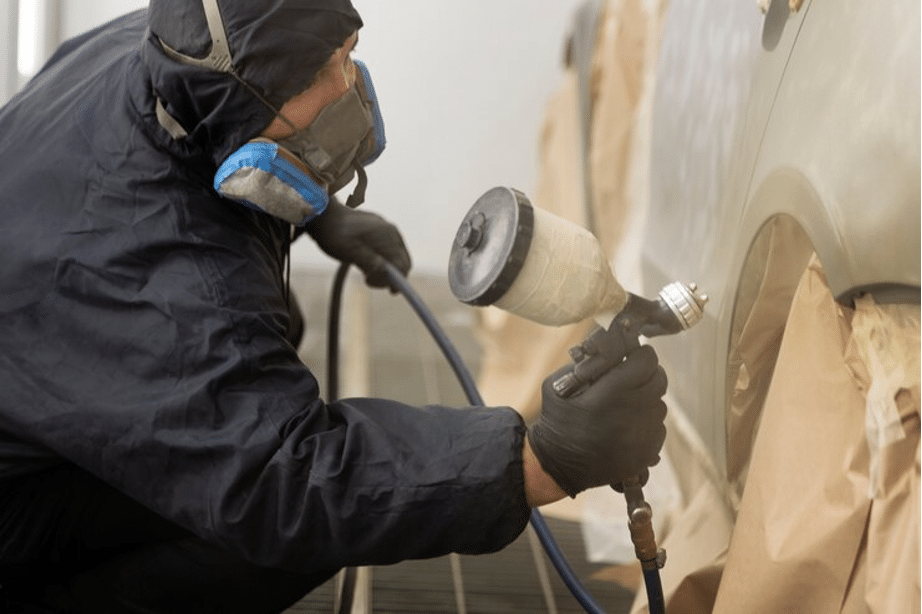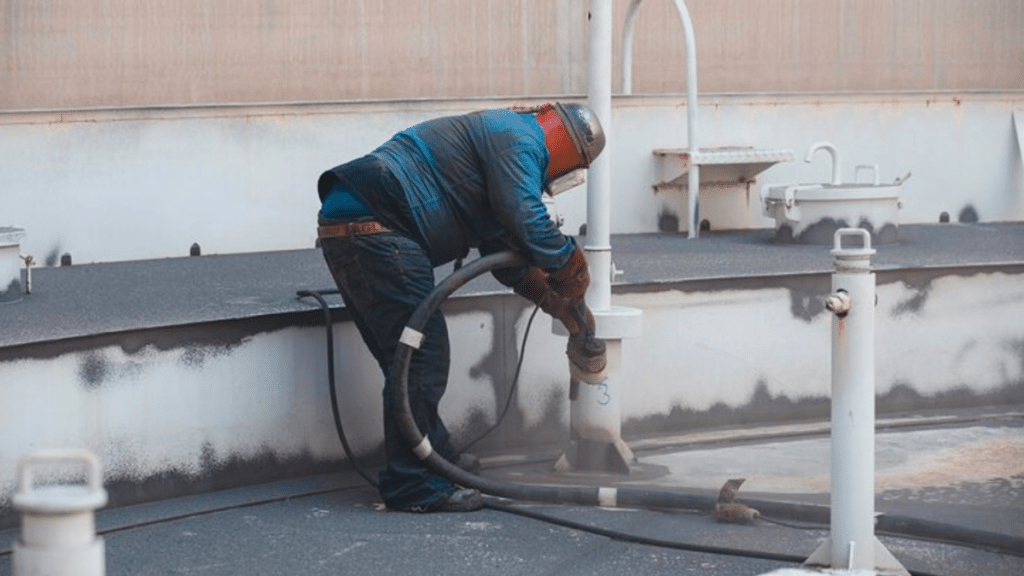Sandblasting is an industrial process where fine granular material is propelled under high pressure onto a surface to smooth, shape, clean or remove its contaminants. It’s used in both manufacturing and renovation activities.
Brief Overview of the Use of Sandblasting
Sandblasting is a technique used to clean, smooth, and shape surfaces. It involves propelling small particles at high speed towards the surface to strip away rust, paint, or other contaminants. In industrial settings, what is sandblasting is commonly employed to prepare surfaces for painting or coating applications.
Origin and Evolution of the Sandblasting Technique
The sandblasting technique originated in 1870 by Benjamin Chew Tilghman, an American inventor. Its evolution witnessed technological advancements for precision and safety, including the introduction of alternative abrasive materials besides sand.
Technological Advancements in Sandblasting
Technological advancements in sandblasting have increased efficiency and precision while mitigating health risks. Innovations include robotic systems, advanced blasting media, automated feed systems, improved recycling methods and stricter safety features for operational control.
Understanding the Sandblasting Process
The sandblasting process involves propelling abrasive materials at high speed onto a surface to remove contaminants or achieve smoothness. Surface preparation, appropriate equipment use and safety measures are vital for effective sandblasting outcomes.
The Basic Principle of Sandblasting
The basic principle of sandblasting involves propelling fine pieces of material at high speed to clean or etch a surface. This abrasive blasting technique provides smooth finishes and removes surface contaminants efficiently.
Key Components of a Sandblaster
A sandblaster consists of an air compressor, a blasting gun, and an abrasive material. The air compressor creates pressure while the gun directs the abrasive material for various purposes like cleaning or surface preparation.
How Sandblasting Works
Sandblasting involves forcibly propelling a stream of abrasive material against a surface. This process smooths rough surfaces, roughens smooth ones or removes contaminants, shaping or cleaning away unwanted materials efficiently.
Different Types of Abrasive Materials Used
Abrasive materials are used extensively for grinding, polishing or cleaning hard surfaces. Different types include garnet, diamond, aluminium oxide, silicon carbide and sandpaper, each varying in hardness and application suitability.
Types of Sandblasting Techniques
1. Wet Sandblasting
Wet sandblasting is a technique involving water and abrasive materials, forcefully propelled to clean or shape surfaces. It reduces dust creation and mitigates heat friction elements, making it an environment-friendly yet powerful cleaning approach.
2. Dry Sandblasting
Dry sandblasting is a process using high-pressure air to spray fine sand onto surfaces, efficiently removing paint or rust. It’s popular in large-scale industrial applications and restoration projects due to its effectiveness and speed.
3. Bead Sandblasting
“Bead Sandblasting” is a surface treatment process that employs fine glass beads as a blasting medium. It’s environmentally friendly and used to clean and finish surfaces without causing harmful effects on users or objects.
4. Soda Sandblasting
Soda blasting is a nondestructive cleaning and paint-stripping technique using bicarbonate of soda. It’s eco-friendly, and effective in removing rust, grime or stubborn dirt without harming the underlying material.
Common Applications of Sandblasting
Cleaning and Smoothing Surfaces
Cleaning and smoothing surfaces involves removing dirt, residues or irregularities, often through scrubbing, sanding or application of cleaning agents. This maintenance process necessitates particular tools depending on the type of surface.
Removal of Rust and other Surface Contaminants
Removal of rust and surface contaminants is crucial for maintaining metal surfaces. Various methods like sandblasting, acidity cleaning, and ultrasonic procedures are employed to effectively eradicate these damages and restore cleanliness.

Paint and Coating Application
The application of paint and coating involves the adherence of a substance to a surface, providing aesthetic appeal and protection from external elements like water, dust, and sunlight. A meticulous process ensures long-lasting effects.
Surface Shaping and Sculpting
Surface shaping and sculpting involves manipulating surface materials, often metals or clay, to change their shape and design. This skill requires precise control, creativity, and an understanding of the material’s properties.
Benefits of Employer Sandblasting Techniques
Employer sandblasting techniques improve commercial efficiency by swiftly eliminating impurities from surfaces, reducing manual labour. Enhanced durability, maintenance ease, and improved aesthetics are substantial benefits of maximizing asset lifespan and promoting a cost-effective approach to business operations.
Potential Drawbacks or Risks
Potential drawbacks or risks refer to potential negative outcomes or hazards associated with a course of action. They may hinder progress, cause harm, or result in undesirable consequences if not anticipated and managed wisely.
Mitigation Strategies for Any Negative Impacts
Mitigation strategies are essential tools for reducing or preventing potential negative impacts. Through careful planning, regular monitoring and collaboration, harmful consequences can successfully be minimized in environmental, social or business contexts thus ensuring sustainable progress.
Safety Measures and Precautions in Sandblasting
1. Personal Protective Equipment
Personal Protective Equipment (PPE) is crucial for maintaining safety in hazardous conditions. PPE includes items like gloves, masks, eyewear and clothing which safeguard people from health or safety risks at workplaces.
2. Safe Work Practices and Procedures
Safe work practices and procedures provide a preventative approach to safety, mitigating risks in the workplace. They include proper training, adherence to guidelines, use of protective equipment and rigorous enforcement of health standards.
3. Regulations and Standards to Follow
Adhering to established regulations and standards ensures accountability, quality, and safety in various industries. They guide operations, promote fairness, prevent malpractices, and create an environment of trust among consumers and stakeholders.
